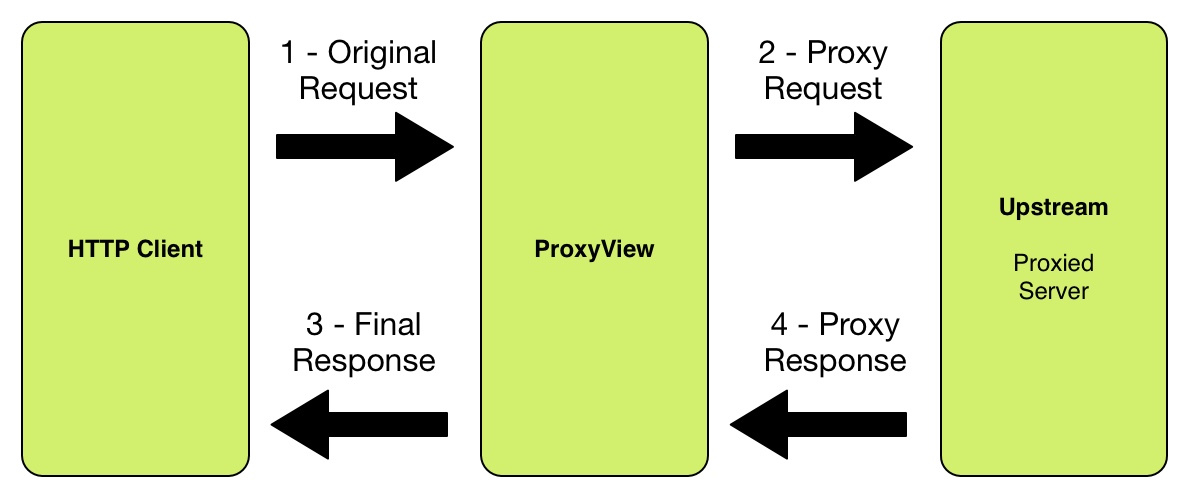Introduction¶
How does it work?¶

At a high level, this is what happens behind the scenes in a request proxied by django-revproxy:
- Django receives a request from the client and process it using a view that extends revproxy.proxy.ProxyView.
- Revproxy will clone the client request.
- If the user is authenticated in Django and add_remote_user attribute is set to True the HTTP header REMOTE_USER will be set with request.user.username.
- The cloned request is sent to the upstream server (set in the view).
- After receiving the response from upstream, the view will process it to make sure all headers are set properly. Some headers like Location are treated as special cases.
- The response received from the upstream server is transformed into a django.http.HttpResponse. For binary files StreamingHttpResponse is used instead to reduce memory usage.
- If the user has setted a set of diazo rules and a theme template, a diazo/XSLT transformation will be applied on the response body.
- Finally, the response will then be returned to the user